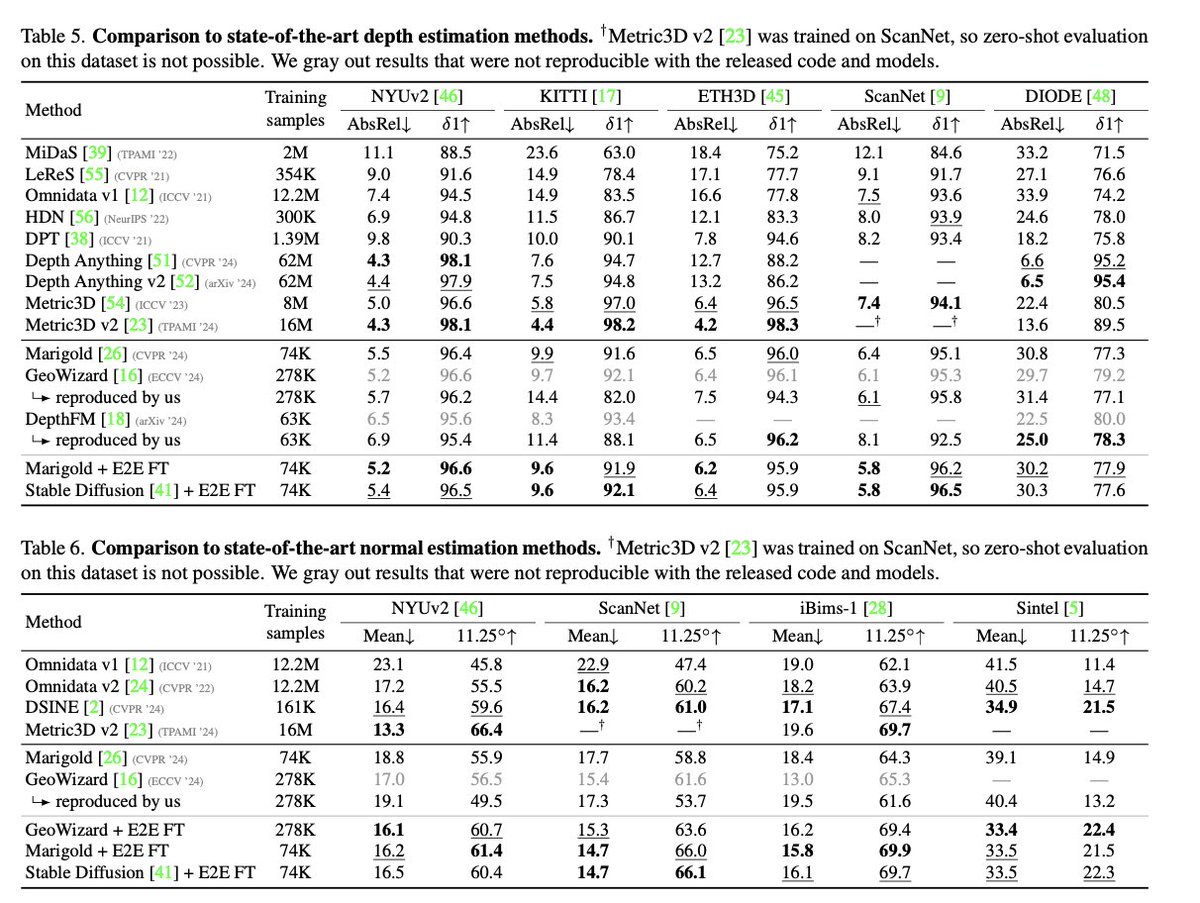
Gonzalo Martin Garcia
@gonzalo_marting
ID: 1800645741708210177
11-06-2024 21:46:32
9 Tweet
21 Followers
63 Following




Fine-Tuning Image-Conditional Diffusion Models is Easier than You Think Gonzalo Martin Garcia Karim Abou Zeid Christian Schmidt Daan de Geus Alexander Hermans Bastian Leibe tl;dr: there is a bug in Marigold noise DDIM scheduler, if you fix ot, you can do 1 step depth estimation. arxiv.org/abs/2409.11355








